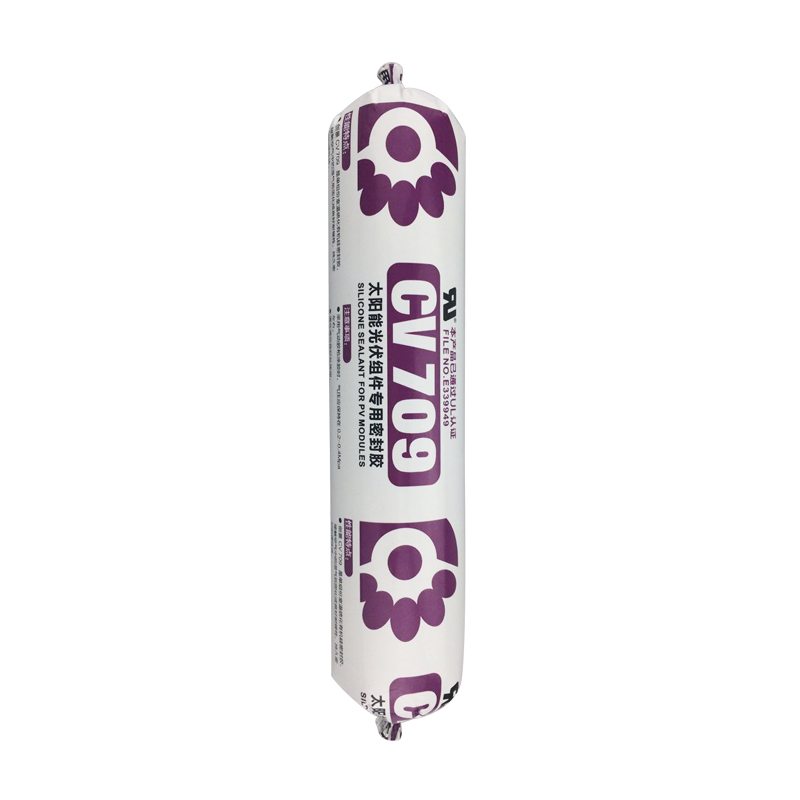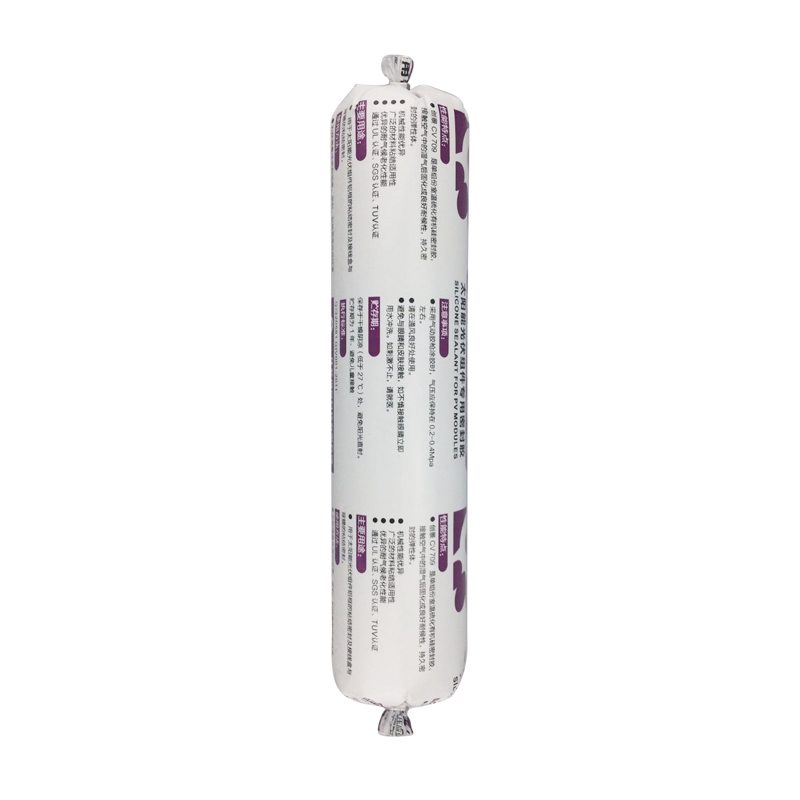Professional Manufacturer for CV-709 silicone sealant for PV moudels to Greece Factory
Short Description:
Description CV709 is a high-performance silicone sealant, one-component oxime type room temperature curing silicone rubber, has excellent weather resistance, high thixotropy, after curing for solar components involved in the base material has good caking property, by TUV for environmental requirements of the ROHS, UL E339949 Key Features 1. 100% silicone 2. No sag 3. high thixotropy 4. Water & weatherproof 5. For solar components involved in the base material has good bonding Basic Ap...
We enjoy a very good reputation among our customers for our excellent product quality, competitive price and the best service for Professional Manufacturer for CV-709 silicone sealant for PV moudels to Greece Factory, We sincerely welcome you come to visit us. Hope we have good cooperation in the future.
Description
CV709 is a high-performance silicone sealant, one-component oxime type room temperature curing silicone rubber, has excellent weather resistance, high thixotropy, after curing for solar components involved in the base material has good caking property, by TUV for environmental requirements of the ROHS, UL E339949
Key Features
1. 100% silicone
2. No sag
3. high thixotropy
4. Water & weatherproof
5. For solar components involved in the base material has good bonding
Basic Application
1.Solar module frame seal
2.The adhesive of the solar energy back to the terminal block
3.General industrial assembly with seal
Technical data sheet
| Test standard | Test project | Unit | value |
| Before curing——25℃,50%R.H. | |||
| specific gravity | g/ml | 1.34-1.40 | |
| GB13477 | Operating time | min | 15 |
| GB13477 | surface drying time(25℃,50%R.H.) | min | 40-60 |
| 3 days after curing——25℃,50%R.H. | |||
| Temperature range | ℃ | -55~200 | |
| GB13477 | Durometer Hardness | Shore A | 40~55 |
| The ultimate tensile strength | Mpa | ≥2 | |
| GB13477 | Breaking elongation | % | 300-600 |
| Aluminum bonding shear strength | Mpa | ≥1.5 | |
| Electrical properties | |||
| Breakdown voltage | Kv/mm | ≥20 | |
| Volume resistance | ohm.cm | 9E+14 | |
| Dielectric constant | 3.1@50Hz | ||
Certification
UL E339949; TUV
Color
Black, White
Package
300ml in cartridge * 24 per box, 500ml in sausage *20 per box
Shelf life
12 months
Note
If you want the TDS or MSDS or other details, please contact with our sales person.
Scotty Kilmer, mechanic for the last 46 years, shows how you can fix tough head gasket leaks using a liquid sealer.And, If you like my car help, be sure to watch my live car talk show every Saturday morning at 10 AM CST on YouTube. I answer your car questions LIVE there. Just check it out at https://www.youtube.com/watch?v=VognjkYaMjg&list=UUuxpxCCevIlF-k-K5YU8XPA&feature=c4-overview . And remember, every TUESDAY I upload a new video, so don’t miss them.
https://tinyurl.com/loqbfz3
Video Highlights
0:18 Kit includes
0:37 First step before starting install
1:20 Cutting to length
3:04 Insulating the Chimney Liner
4:29 How to lower into the chimney
5:40 Next Step will be Attaching to the appliance
6:00 Attaching the appliance adapter
7:16 Installing the insert
7:44 Installing the Top Plate
8:51 Cutting the access liner off
10:23 Attaching the Cap
11:44 Silicone the screws
Robert explains how to install Chimney Liner.
Installing a stainless steel chimney liner is an easy and economical way to repair a deteriorated, unsafe, or inefficient chimney flue. You will be able to install a chimney liner after reading this and watching the video. You can do the job with common household tools. A chimney liner should be installed to reduce the chance of a carbon monoxide leak, chimney fire, and creosote buildup. Chimney liners also improve the energy efficiency of the appliance and makes fireplace maintenance easier.
First, determine the appropriate size chimney liner for your specific setup. The chimney liner diameter size you will need will be the same size of the exhaust outlet on the appliance. The chimney liner length you will need will equal the height of the chimney. we recommend ordering slightly over that amount to give room for error.
Only a few tools are needed for a successful chimney liner installation. You’ll need a tin snips (or a sawzall or hacksaw), drill and bit, flat head screw driver, caulk gun, work gloves, and safety glasses.
Every basic chimney liner kit is going to come with four main components: the stainless steel chimney liner, connector (either a Tee connector or a Stove Top connector), top plate, and rain cap. This video shows a basic stove top installation.The top plate is going to be the main variable for a chimney liner kit.
Start by using your knife and remove the plastic wrap that the liner is coiled in. Once you have the liner out, start to straighten the liner. Make sure to do this on the grass or a soft surface so you don’t puncture it. Straighten the liner out as best as you can. It does not need to be perfect as you will have to do some manipulation to get it down the chimney.
After installing the insulation you will need to get the liner to the top of the chimney. Proceed to lower the liner down the chimney until you reach the damper or smoke shelf. You will need to do some adjustments when you get back inside to get it through this.
Twisting the flexible liner will help you install the liner if you are getting caught or hung up on the chimney walls.
Now you will need to head into the house to finish connecting the appliance.
Once the stove connection has been installed correctly, it is time to connect the stove pipe to the stove. Most stove pipe comes with three screws per connection point. Use your drill and drive the screws into the horizontal part of the tee and through the exhaust collar of the stove. using furnace cement to secure and stop any leaks.
Once the chimney liner is all the way down the flue to the point of the appliance, the next step is to connect the top plate to the top of the chimney. The main function for a top plate is to seal the existing flue from rain, wind and critters from entering the chimney. Start by using your caulk gun and a tube of weather resistant high-temp silicone to run a bead of silicone along the top edge of the clay flue.
Next, thread the chimney liner through the round collar of the top plate so that the top plate is sitting on the top edge of the clay flue.
When you have successfully installed the top plate, the next step is to cut the excess liner flush with the top of the collar of the top plate. Your sawzall or hacksaw will work just fine.
The next step is to secure the rain cap to the top plate. The Cap will just slide over and then tighten the clamp.
Congratulations, you have successfully installed a stainless steel, flexible chimney liner!
Click Here:https://tinyurl.com/lxloa28 To see all of our Chimney Liners.




